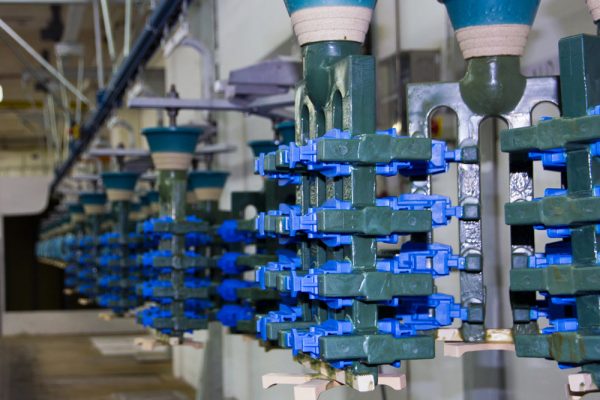What is the Investment Casting Process?
For customers in need of simple to complex parts created from a wide variety of metals, investment casting processes provide unique advantages. This technique uses the lost wax casting processes where a pattern of the part is made from wax.

The wax pattern becomes dipped or coated in a ceramic slurry that hardens to become a mold. The wax becomes melted out of the ceramic mold as molten metal is then poured inside. Once the metal cools, the ceramic mold is removed to show the cast metal part.
There are many key steps involved with the actual investment casting process. Yet keep in mind that it really begins with the customer deciding on the dimensions and specifications of the part along with the type of metal that will be used. When we receive this data and documents, our role in the investment casting process may begin.
Investment Casting Steps
Tooling Design and Manufacturing
Tooling design and manufacturing processes focus on the tooling needed to make the wax patterns. Tooling must also be designed and produced for the water soluble or ceramic cores.
Raw Material Inspection
We inspect the raw materials from the supplier to reassure they are what is requested for the project. We also evaluate the quality of the materials. We also want to avoid purity issues and contaminants that may cause issues during melting and pouring.
Wax Pattern Production
The wax pattern production step involves making wax patterns that are used to produce the ceramic shell molds. To create the patterns, injection molding techniques and injected molding dies are used.
Ceramic Shell Making
The next step in the investment casting process is to take the wax pattern and dip it or surround it with a ceramic slurry. The slurry has binders that allow the ceramic to harden as an even coating is obtained. The ceramic shells harden as then the wax is removed by being melted or burnt out.
Melting & Pouring
The ceramic molds become preheated. Then the pouring process begins with the molten metal entering the ceramic pattern. The molds are preheated to eliminate cold spots that may cause the molten metal to cool unevenly while it fills into all the crevices and intricate parts of the mold. Once the pouring is complete, the metal is allowed to cool as the part is finished casting.
Cutting and Cleaning
The ceramic shell becomes removed to show the cast part. Now the part undergoes a cleaning process where any gates and runners are removed using grinding, cutting, and shot-blasting techniques.
Secondary Machining
Secondary machining processes help to cut down and form the cast process to the appropriate surface dimensions. During this phase, a range of CNC machines may be used depending on the complexity of the part.
Optional Heat & Surface Treatments
Optional heat treatment and surface treatment may be required to enhance the properties of the part’s metal. The heat treatment process usually occurs after cutting and cleaning the part, while surface treatments occur after the secondary machining process. Heat treatment helps to harden and provide mechanical properties to the part while surface treatment may enhance certain properties such as corrosion or wear resistance.
Inspection and Packaging
Every finished part becomes inspected to ensure only the highest quality component is sent to the customer. The parts are then packaged for delivery to the customer.
The timeline for the entire investment casting process varies based on the complexity of the part, which processes are required, and the number of parts that are requested. To learn more about our processes and how they may help with your component project, contact Impro.